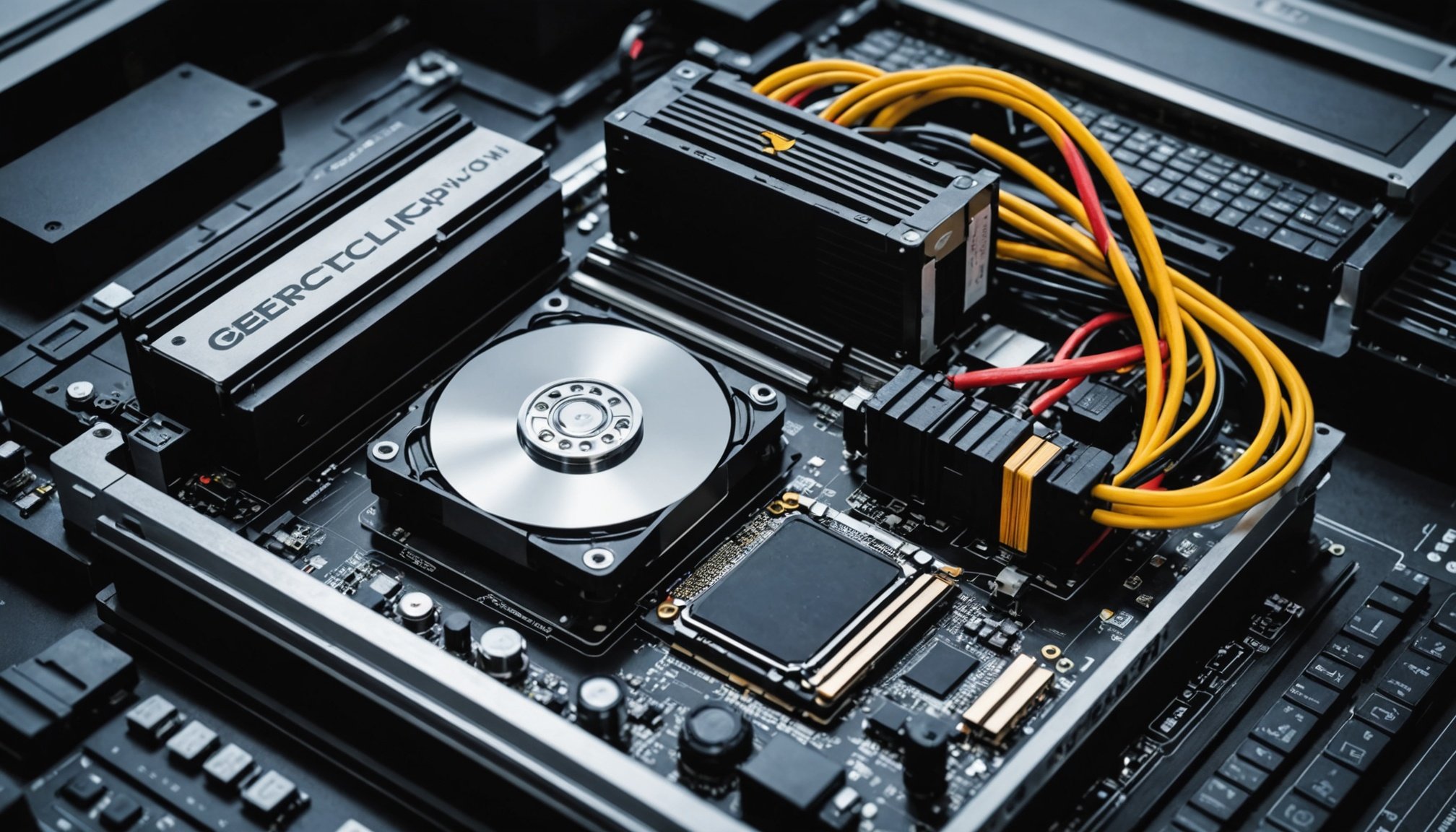Overview of Performance Benchmarking Tools
Performance benchmarking tools are crucial utilities designed to evaluate a PC’s performance and system capabilities. These tools provide a measurable way to assess how efficiently a computer performs various tasks by simulating demanding conditions. Understanding and using these tools can help users leverage their system’s full potential.
The primary aim of these tools is to analyze different components, such as CPU, GPU, RAM, and storage, to identify bottlenecks or areas needing improvement. By offering a comprehensive PC performance assessment, users can make informed decisions about upgrades or adjustments that could enhance their computing experience.
Also to discover : Is your power supply up to the task? a guide to evaluating your hardware needs
Benchmarking is essential for anyone seeking to maximize their PC’s performance. For gamers, it ensures graphics are rendered smoothly without lag. For content creators, it assures that tasks like video rendering are handled promptly. By regularly conducting these tests, users can maintain optimal system capabilities and anticipate any potential issues before they hinder productivity.
Several benchmarking tools are available, each catering to different aspects of performance and featuring unique interfaces. Some of the most common include 3DMark for graphics testing and Cinebench for CPU performance. By selecting the appropriate tool, users enjoy meaningful insights into their system’s operational prowess.
Also to read : Exploring the advantages of modular power supplies for your custom pc build
Popular Benchmarking Tools for PC Performance
Benchmarking software offers indispensable assistance in assessing and improving a PC’s performance. Each tool, with its unique features, caters to specific evaluation needs.
Tool 1: 3DMark
3DMark is a widely-used graphics benchmarking tool. It’s designed for testing GPU performance under intense rendering conditions. The software simulates graphically demanding scenarios, making it ideal for gamers aiming to ascertain their rig’s capability in handling high-end games. Its user-friendly interface and detailed scoring system provide clear insights into graphics performance. Additionally, 3DMark allows users to compare their scores with other systems globally.
Tool 2: Cinebench
Cinebench specializes in evaluating CPU performance. It uses a complex rendering test derived from Maxon’s Cinema 4D suite, offering a real-world scenario indicator of processing power. This makes Cinebench perfect for content creators involved in video editing or 3D modelling. Its simple setup and straightforward results make it accessible even for novice users.
Tool 3: UserBenchmark
UserBenchmark provides a comprehensive performance overview, spanning CPU, GPU, and storage capabilities. Targeted toward those who need a broader assessment, it is straightforward and intuitive, catering to casual users and enthusiasts alike. With actionable insights derived from real-world data, this tool aids in benchmarking software comparison by highlighting areas needing improvement and offering upgrade suggestions.
How to Use Benchmarking Tools Effectively
Ensuring you’re leveraging benchmarking tools effectively is crucial for accurate performance testing. The process begins by preparing your system. First, close unnecessary applications and tasks to prevent them from interfering with the benchmark. This ensures the PC operates under conditions specific to testing, offering a clear picture of its capabilities.
Performance benchmarking tools come with various settings and configurations. Familiarising yourself with these options is crucial. They enable tailored tests, focusing on specific components like the CPU or GPU. Generally, running tests multiple times under varying conditions ensures the results are consistent and reliable.
Step-by-step guide for using benchmarking tools:
- Download and install the selected benchmarking software.
- Launch the application and select the test type (e.g., CPU or GPU performance).
- Review and adjust testing settings as needed.
- Initiate the test and monitor progress.
- Once completed, review the detailed results to identify strengths and areas needing improvement.
Finally, it’s worth noting that benchmark scores can vary based on external factors, such as hardware temperature and power settings. Maintaining the system for consistent testing conditions is essential for obtaining reliable results.
Interpreting Benchmark Results
Interpreting benchmark results requires understanding the significance of various performance metrics. Benchmarks typically produce scores that reflect how well a PC’s components perform individually and collectively. Common metrics include FPS (Frames Per Second), computational scores, and throughput rates. These scores provide insights into aspects such as gaming smoothness, processing power, and data retrieval speed.
Industry standards can serve as benchmarks for comparison, helping you evaluate where your system stands relative to typical or exemplary performance levels. For instance, gaming PCs generally target higher FPS values to ensure smooth gameplay, while editing workstations prioritize multi-core scores for efficient rendering.
A common pitfall in interpreting benchmark data lies in overlooking external influences. Conditions like ambient temperature, power settings, and background processes can skew results. Therefore, consistent testing environments are crucial for accurate analysis.
When analysing the data, remember:
- High scores generally indicate potential for performance improvement but must be aligned with real-world tasks.
- Comparative analysis with systems of similar specifications offers the most relevant insights.
- Use benchmark results as a tool for** optimizing PC performance**. They can highlight weaknesses that, when addressed, notably enhance system capabilities.
By correctly interpreting these metrics, users can make informed decisions about potential upgrades and system optimizations.
Optimizing PC Performance Based on Benchmarking
Achieving optimal PC performance often necessitates a combined approach of performance improvement techniques. This encompasses not just hardware or software interventions, but also precise system optimization tips. Configuration Tweaks can significantly boost performance. These tweaks involve adjusting settings to align with the user’s specific demands, such as altering power profiles to favour performance or balancing thermal management.
Hardware Upgrades
Upgrading hardware is a direct method for improving PC performance. Common upgrades include adding more RAM, switching to an SSD for faster data access, or updating the graphics card to enhance visual rendering. Such enhancements can immediately increase processing power and efficiency.
Software Optimization
Optimizing the software side is equally crucial. This may involve regularly updating software to benefit from performance improvements and bug fixes. Utilising software that prioritizes tasks based on their importance can also make a marked difference.
Configuration Tweaks
Tailoring configurations to specific tasks ensures resources are not wasted. For example, enabling game mode during gaming sessions helps direct more power to needed areas, ensuring smoother gameplay. Regular maintenance, including cleaning up unnecessary files and defragmenting your storage, complements these strategies and keeps the system running efficiently. This comprehensive approach guarantees sustainability in achieving and maintaining optimal performance.
Examples and Tutorials
Exploring benchmarking examples can provide valuable insights into real-world applications of these tools. For instance, a user might employ 3DMark for an in-depth PC performance assessment, comparing graphics capabilities before and after a GPU upgrade. Such practical usage highlights how benchmarking results can guide system optimization tips and ensure effective performance improvements.
In this tutorial, we’ll guide you through a common benchmarking process using Cinebench. Begin by closing any unnecessary programs running in the background to ensure accurate results. Download and install Cinebench, then launch the program. You’ll be presented with options to run tests on single-core or multi-core performance, which helps assess the CPU’s efficiency under different loads.
For more detailed tutorial for benchmarking, consider running multiple tests at different settings. Modify configurations to see how changes affect results. Screenshots of test outcomes can serve as handy references as you benchmarking examples to compare before and after results.
Visual aids, like graphs depicting increased CPU scores post-upgrade, can vividly demonstrate the impact of your optimizations. This approach not only provides clarity but also empowers users by showcasing tangible improvements achieved through informed decisions and proactive system management.


